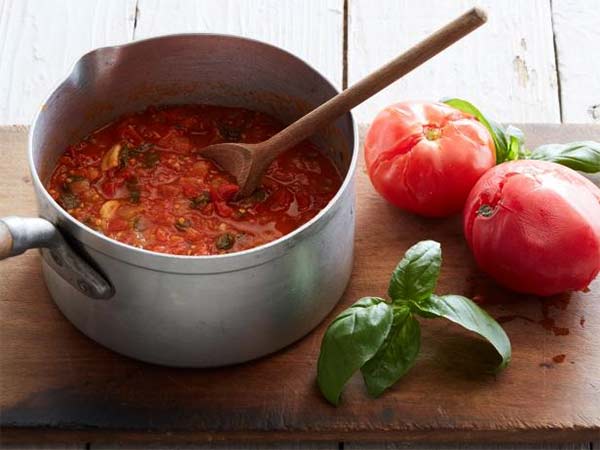Tomato sauce helps boost probiotic food benefits
The demand for functional foods is increasing in recent years. Consumers request more food that, as well as a high nutritional value, has a beneficial effect on their organism and reduces the risk of suffering certain illnesses. This beneficial effect doesn’t only depend on the food’s amount of bioactive components, but on the changes they experience during the digestive process, which impact their bioaccessibility and bioavailability.
 In this context, researchers at the Universitat Politècnica de València (UPV) belonging to the Food Development Engineering Institute (IUIAD) and the Advanced Centre on Food Microbiology have evaluated the impact certain antioxidants in tomatoes, phenolic compounds and lycopene, have on the viability of the probiotic microorganism L reuteri, and vice versa, throughout the digestive process.
In this context, researchers at the Universitat Politècnica de València (UPV) belonging to the Food Development Engineering Institute (IUIAD) and the Advanced Centre on Food Microbiology have evaluated the impact certain antioxidants in tomatoes, phenolic compounds and lycopene, have on the viability of the probiotic microorganism L reuteri, and vice versa, throughout the digestive process.
The study has been published in the Journal of Functional Foods. Among its results, researchers have verified how the presence of antioxidant compounds protect the probiotic strain against the loss of viability that takes place during the digestive process, achieving a greater effect when they come from fried, and not raw, tomato sauce.
Furthermore, the study offers advice when designing diets or issuing dietary recommendations regarding eating foods together in the same meal or menu, in order to boost the probiotic effect of bacteria such as Lactobacillus reuteri.
“We have evaluated the viability of the probiotic strain along the digestive process individually and the presence of antioxidants from vegetable sources, as well as the impact of the probiotic strain on the changes suffered by antioxidant compounds and the resulting bioaccessibility. We worked with raw and fried tomato to determine the impact of processing. And among the results, we found that serving meals rich in probiotics with fried tomato sauce boosts its probiotic effect; as well as causing a progressive isomerisation of the lycopene of the tomato, from form cis to trans throughout digestion, which positively results in an increased final bioaccessibility of this carotenoid,” states Ana Belén Heredia, researcher at the IUIAD of the UPV.
Furthermore, this work shows that there is a need to take into account not only changes experienced by the bioactive compounds during food processing, but also during the digestive process. According to the researchers, these changes would have to be taken into account when the food industry designs functional foods, so that the bioaccessibility of bioactive compounds and the viability of probiotics are secured or maximised.
“Viability throughout the gastrointestinal tract, and the gastro-resistance of Lactobacillus reuteri, is affected by a parallel supply of antioxidant compounds from tomatoes. And we have shown that fried tomato is better than raw tomato in both cases,” adds Jorge García Hernández, from the Advanced Centre in Food Mocrobiology.
This project has been completed as part of the multidisciplinary project “Gastrointestinal simulation for the study of the “Functional ingredient-food matrix” interactions and its impact on the bioavailability and functionality of micronutrients”.
Source: Asociación RUVID
Full bibliographic information
Tomato-antioxidants enhance viability of L. reuteri under gastrointestinal conditions while the probiotic negatively affects bioaccessibility of lycopene and phenols. J. García-Hernández, M. Hernández-Pérez, I. Peinado, A. Andrés, A. Heredia. Journal of Functional Foods.

